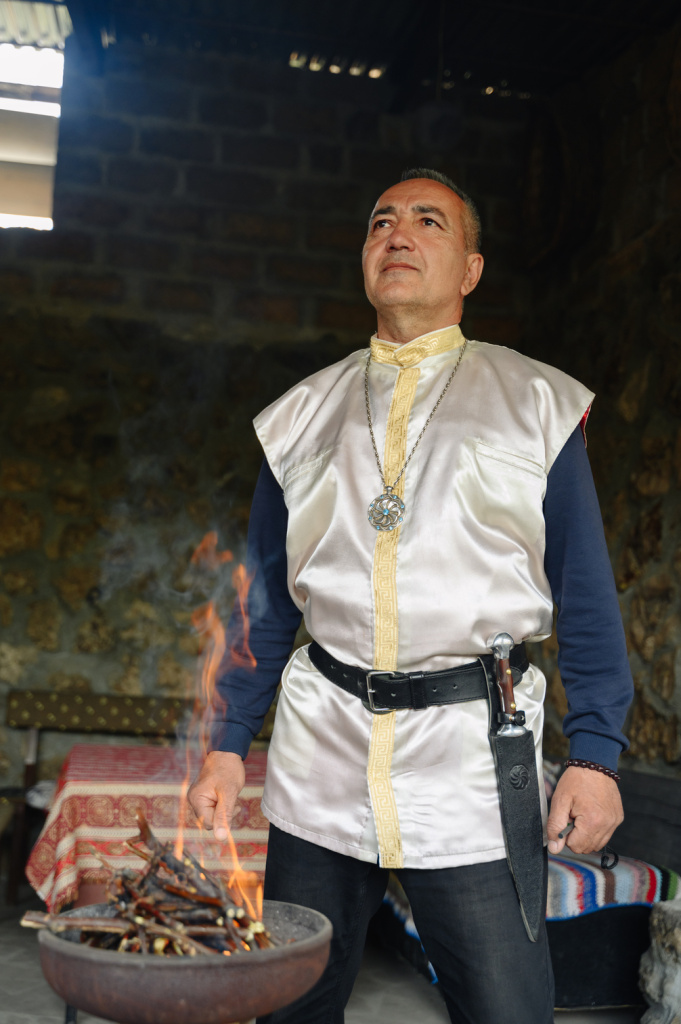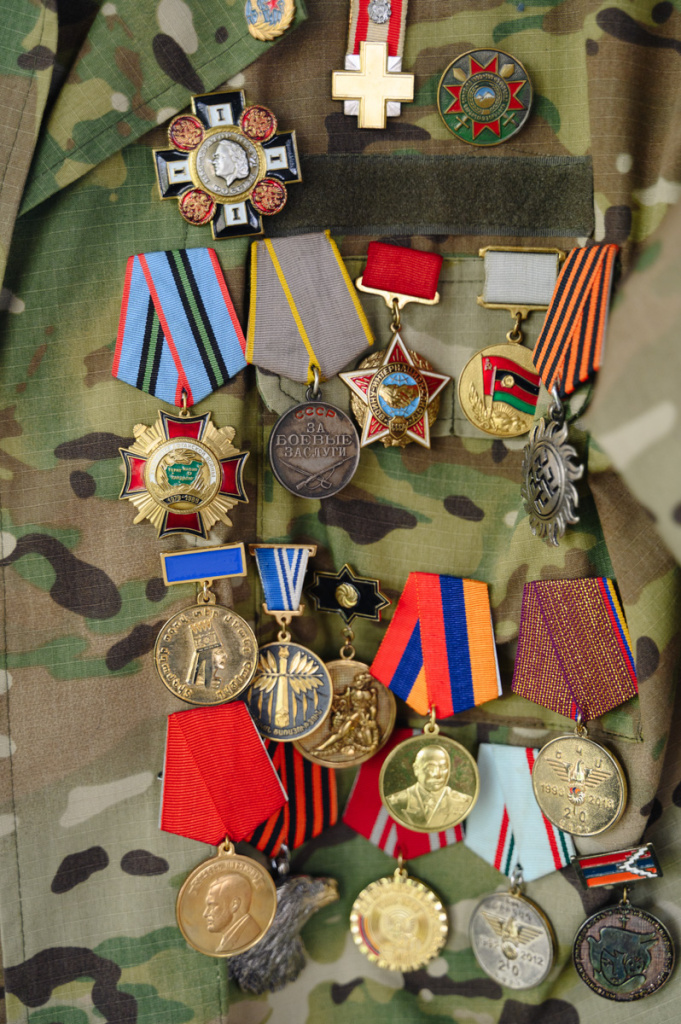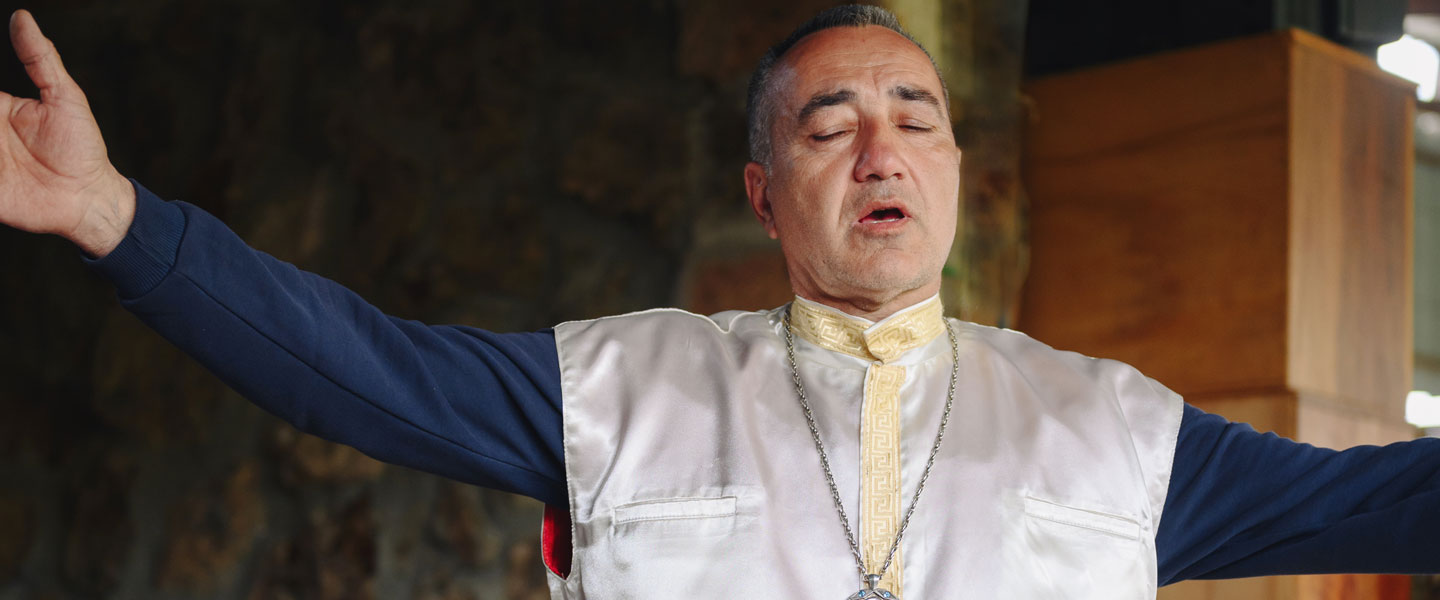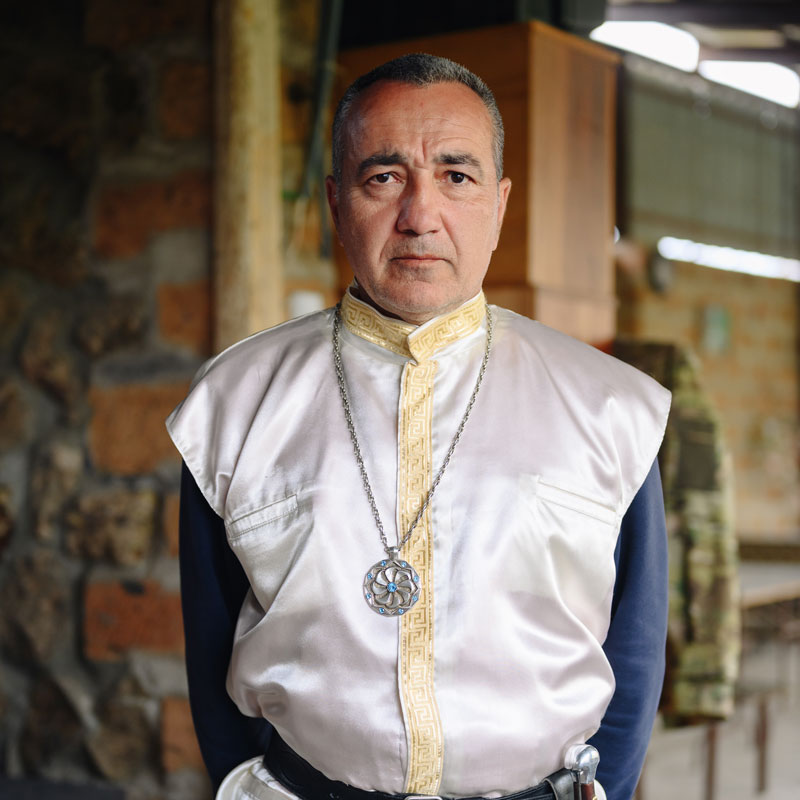We went to Garni with full understanding that we were heading to one of the key hubs of Armenian paganism.The only pagan temple in Armenia has been preserved there – the main ritual place of the neo-pagans. They call themselves "arordi", which translates from Armenian as "children of the sun". We came to visit one of them – Argishti Shamiryan.
He became a priest in December 2012 and, according to him, it happened thanks to his national idea. He believes that the philosophy of paganism with a willingness to fight for the land is more suitable for him than the philosophy of Christianity with its concept of self-sacrifice. In neo-paganism, the concept of "warrior" is crucial for Argishti, therefore, this religion is most important for him as a person who has walked a difficult military path (the priest participated in the Afghan war, as well as in the First and Second Artsakh wars). He takes care of the mental state of the fighters in difficult times.


Argishti showed us his ritual symbols: a dagger – a "participant" in the battles of 2016 and 2020, as well as a family flame – a bowl called "aman". The fire (heat, flame) in the bowl is called "khur", and “khuraman tanogh” is literally "the person who carries a torch". Khuraman tanogh sounds similar to the word "hramanatar", which means "commander", that is why many priests consider themselves to be warriors.
"From the first day of my life I have been connected with paganism. On the day of my birth, Marshal Hovhannes Baghramyan visited our village and came to our house. He gave me wine (according to the custom, newborns are immediately given a few drops of wine to drink so that peristalsis works well) and blessed me. Besides, I was born on December 1, 1960. Before I was born, there was a snowfall and a storm, and then everything calmed down, and the sun appeared. For pagans, the energy of the sun is very important, all holidays are connected with the sun and cosmic cycles," say Argishti and his wife Gayane.
The couple said that solar energy is so important for pagans that they celebrate every holiday with the sunrise. Several pagan holidays are still celebrated in Armenia: Vardavar (a holiday in honor of Astghik, the goddess of love and beauty; on Vardavar everyone pours water on each other), Trndez (a fire festival; Armenians considered themselves children of the sun and worshiped the "earthly sun" – fire), and Navasard (the pagan new year in Armenia, celebrated on August 11 in honor of the victory of Hayk Nahapet ("the ancestor") over the tyrant Bel, who represented the constellation of the Bull). According to Argishti, the cosmic energy and the energy of the birthplace (the energy of the earth) mix in each person and define them.


"My normal day starts with rituals. A priest in Armenia gets up before dawn, looks with open eyes at the sun, which does not blind at sunrise. There are "vibrations" that we catch with our own eyes. There is a kind of "big channel " between our eyes and the sun, and these "vibrations" are directed through this channel to me. At dawn, the solar energy transmits to you the energy that is specifically for you. Everyone understands these vibrations in their own way. After sunrise, I start an ordinary life," this is how Argishti described his morning ritual and explained that, in fact, many people misunderstand paganism. This is not polytheism, he says, but different powers of the gods that awaken in a person at a certain moment. There is a god of fire, a god of water, a god of war – and all these gods exist inside every person.
Now, there are fewer than 1,000 pagans in Armenia. We were really lucky to meet Argishti Shamiryan and find ourselves in a house with an interesting and mysterious atmosphere, in which the owner draws moral and physical energy from the sun and native land. Come to visit Argishti and Gayane in Garni and dive into their way of life, and make sure to write to the priest in advance on Facebook.

